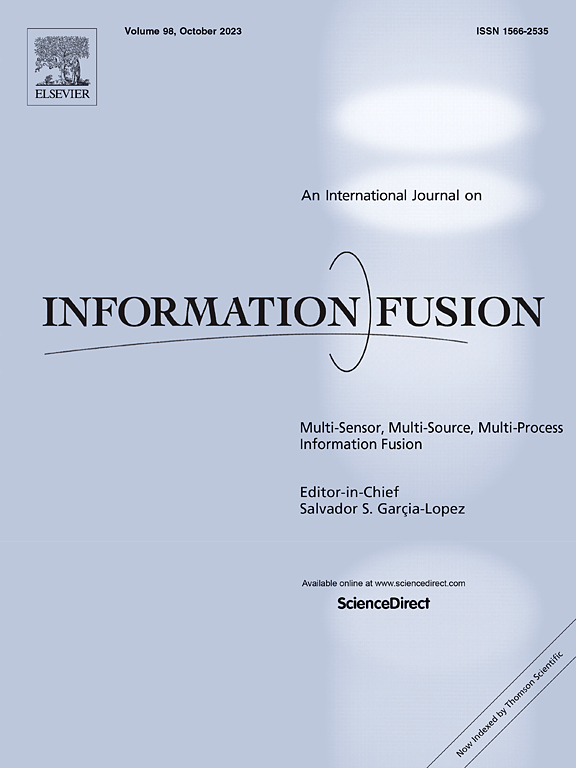InKrat: Interpretable diagnosis prediction models based on cross-modal knowledge graph semantic retrieval fusion
IF 15.5
1区 计算机科学
Q1 COMPUTER SCIENCE, ARTIFICIAL INTELLIGENCE
引用次数: 0
Abstract
Although deep learning models have made breakthrough achievements in many fields, they still face some challenges in diagnostic prediction tasks in healthcare. Existing methods either use graph structures or sequence structures one-sidedly or disjointedly, failing to obtain high-quality representations of EMR data. Some knowledge-enhanced methods rely on strategies based on name or identifier matching, lacking flexibility while introducing semantically mismatched noise. On the other hand, attention-based models for interpretable analysis can only provide the importance of different factors rather than intuitive and easily understandable natural language descriptions. To address the above issues, we propose InKrat, a new KG-enhanced method. Specifically, we designed a novel temporal graph structure that models the structure and temporal information in EMR by integrating anchor nodes as a bridge. We also developed a cross-modal semantic retrieval method, utilizing a large language model (LLM) to compute the semantic similarity between the KG and medical notes, filtering the knowledge accordingly. Finally, based on the knowledge prompts, the LLM generates interpretable descriptions of the prediction results. We have extensively validated the effectiveness of InKrat through experiments on two commonly used real-world datasets. The results demonstrate that our proposed method achieves state-of-the-art performance. Our code can be found at https://github.com/lzh-nwpu/InKrat.
基于跨模态知识图语义检索融合的可解释诊断预测模型
尽管深度学习模型在许多领域取得了突破性的成果,但在医疗保健领域的诊断预测任务中仍面临一些挑战。现有的方法或片面地或不连贯地使用图结构或序列结构,无法获得高质量的EMR数据表示。一些知识增强方法依赖于基于名称或标识符匹配的策略,缺乏灵活性,同时引入了语义不匹配的噪声。另一方面,基于注意的可解释性分析模型只能提供不同因素的重要性,而不能提供直观、易于理解的自然语言描述。为了解决上述问题,我们提出了一种新的kg增强方法InKrat。具体来说,我们设计了一种新的时间图结构,通过整合锚节点作为桥梁来建模EMR中的结构和时间信息。我们还开发了一种跨模态语义检索方法,利用大型语言模型(LLM)计算KG和医疗笔记之间的语义相似度,并相应地过滤知识。最后,基于知识提示,LLM生成预测结果的可解释描述。我们通过在两个常用的现实世界数据集上的实验,广泛验证了InKrat的有效性。结果表明,我们提出的方法达到了最先进的性能。我们的代码可以在https://github.com/lzh-nwpu/InKrat上找到。
本文章由计算机程序翻译,如有差异,请以英文原文为准。
求助全文
约1分钟内获得全文
求助全文
来源期刊

Information Fusion
工程技术-计算机:理论方法
CiteScore
33.20
自引率
4.30%
发文量
161
审稿时长
7.9 months
期刊介绍:
Information Fusion serves as a central platform for showcasing advancements in multi-sensor, multi-source, multi-process information fusion, fostering collaboration among diverse disciplines driving its progress. It is the leading outlet for sharing research and development in this field, focusing on architectures, algorithms, and applications. Papers dealing with fundamental theoretical analyses as well as those demonstrating their application to real-world problems will be welcome.
 求助内容:
求助内容: 应助结果提醒方式:
应助结果提醒方式:


